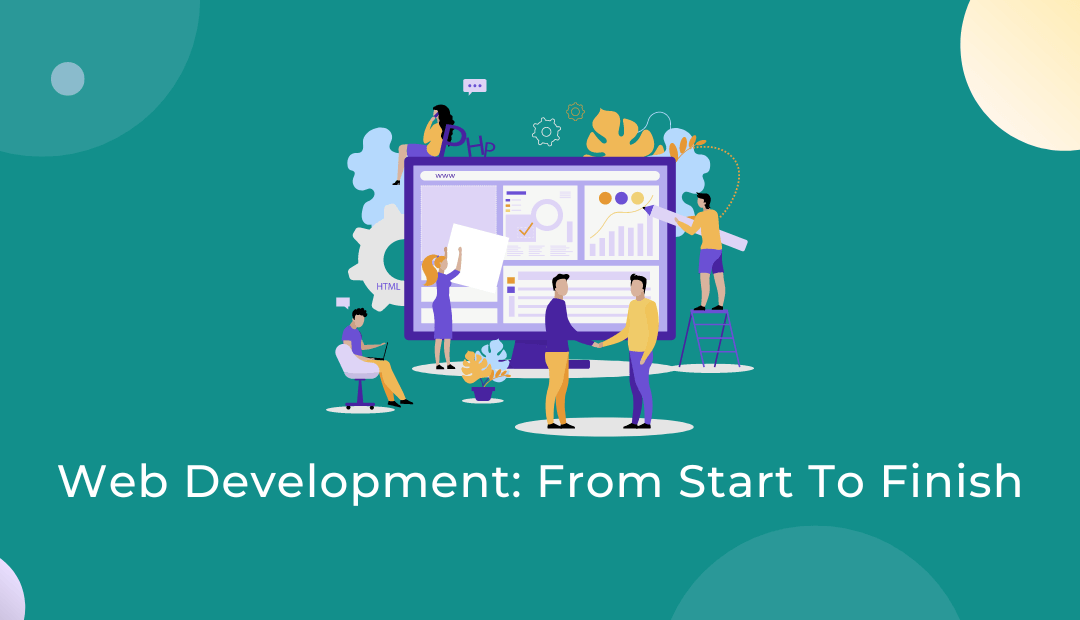Are you interested in learning web development? This guide provides an overview of the fundamental topics of web development, including best practice methodology. Whether you are a beginner or have some experience coding, this guide will help you get started with creating websites and other web applications quickly and effectively.
Web Development: From Start to Finish
Discover the fundamentals of web development and explore best practice methodology! This guide is ideal for those just starting out in web development.
Understanding the Basics of Web Development
Web development involves creating the foundation for any website, from the basic structure and layout to designing better user experiences. To start, you’ll need a working knowledge of HTML and CSS, which are the building blocks of web design. Once you understand these foundational topics, you’ll be ready to take on more complex elements such as interactive forms and databases. With a solid foundation in hand, you can begin experimenting with frameworks like React or Vue to create dynamic websites that respond to user input.
Setting Up a Development Environment
Setting up a development environment is essential for beginning web developers. A local web server allows you to replicate conditions and debug issues in a safe, isolated environment before deploying your code to a live website. Most operating systems have several options available, such as XAMPP or MAMP, that are easy to download and configure with minimal setup. After installation, be sure to test basic functionality before tackling more complex development tasks.
Mastering HTML, CSS, and JavaScript
Once your development environment is configured, understanding HTML, CSS, and JavaScript is essential to being an effective web developer. HTML provides the structure and content of web pages—it defines the different types of information that appear in a page, including text and images. CSS allows you to style the look of your page in more detail; this includes fonts, colors, background images, and layout features. Finally, JavaScript adds interactivity to a page by allowing elements to be modified on-the-fly as users interact with them. Together, HTML, CSS, and JavaScript are the building blocks of modern web development.
Building Responsive Pages
Responsive design is about making sure that the page looks good regardless of the device size or orientation. To create a responsive web page, you can use tools like media queries and flexible grids to ensure that the same content and features are accessible on different devices. Additionally, minifying your HTML, CSS, and JavaScript files can improve the performance of the page by reducing download sizes. Finally, testing a page across various browsers, resolutions, and devices allows you to identify any issues quickly and resolve them.
Testing and Troubleshooting Web Applications
Testing and troubleshooting are critical activities for web applications. During this process, it’s necessary to identify potential problems or issues that could affect the performance of the page. This can be done through testing tools like Selenium and Protractor, which allow you to simulate real-world user scenarios and reproduce any issues found in the application. Additionally, many issues can be solved by debugging techniques such as code optimization, memory profiling, and compatibility checks.
In conclusion, web development is a multifaceted process that involves various technical and creative skills. From the initial planning stages to the final deployment, web developers have to ensure that the website or web application is functional, user-friendly, and visually appealing.
Along the way, they encounter numerous challenges and must continuously adapt to new technologies and design trends. Despite the complexities, web development can be a highly rewarding field that offers endless opportunities for creativity and innovation. Whether you are a seasoned professional or just starting, the key to success in web development lies in continuous learning, collaboration, and a passion for creating exceptional digital experiences.

